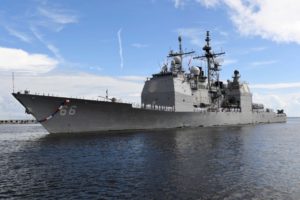
The final version of the fiscal year 2022 defense authorization bill funds the procurement of 13 battle force ships, saves two of seven cruisers the Navy wants to retire, and adds 12 A/A-18-E/F Super Hornet aircraft. Legislators unveiled the final version of the bill this week after the Senate’s version stalled over disagreements on amendments (Defense Daily, Dec. 7). The bill would allow the Navy to procure 13 ships including two Virginia-class attack submarines, three Arleigh Burke-class destroyers, one Constellation-class…

 By
By 











